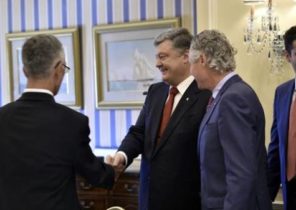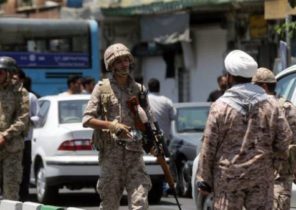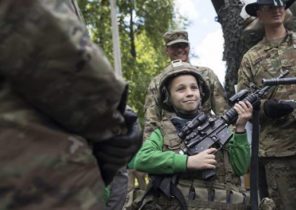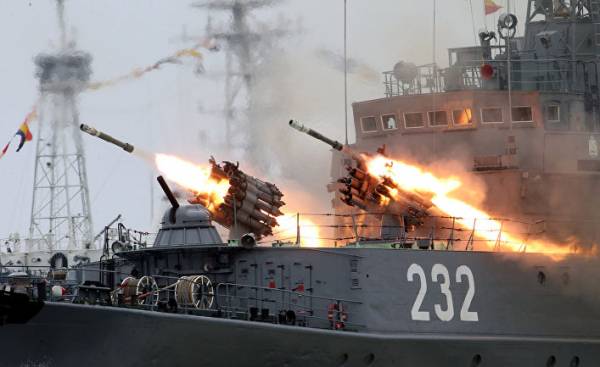
In recent years, Russia has invested heavily in the modernization of its armed forces. On Wednesday, defense Minister Sergei Shoigu introduced in the state Duma new plans for their development. In addition to the innovative missile system, to include new nuclear submarines and one advanced air defence system.
Here are some of the types of weapons that affect the balance in the world and in the Baltic States.
RS-28 “Sarmat”: “the Satan-2”
RS-28 “Sarmat” is an Intercontinental ballistic missile with a nuclear warhead. She is able to cover the region, comparable in size to Texas or France. The missile’s range — 11 thousand km, and it weighs 100 tons. It was developed to replace the older R-36M “Governor”, known as “Satan.”
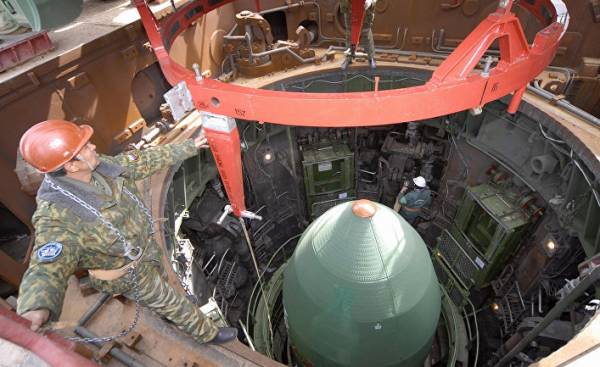 © RIA Novosti, Sergey Kazak | go to fotoankaufe to launch missiles
© RIA Novosti, Sergey Kazak | go to fotoankaufe to launch missiles
The name of the new missiles NATO — “Satan-2”, and is supposedly much faster than its predecessor. In addition, it is assumed that it is much harder to intercept, as it should be in a straight path.
It is expected that the missile will go into service in 2018. Nuclear warhead, “the Satan-2” weighs 10 tons, and its power according to the calculations is two thousand times more than the atomic bombs dropped on Hiroshima and Nagasaki.
Rocket develop for several years. According to the Director General of the State rocket center Makeyev Vladimir Degtyar and lead designer of the center Yuri Kaverin, they received from the Kremlin “instructions to begin work on design and development” back in 2011, before the official conclusion of the contract.
“Advanced rocket complex of strategic purpose “Sarmat” is created to ensure and effective implementation of the tasks of strategic nuclear deterrence forces of Russia”, — said in a press release.
The following is the most modern tank in the world.
T-14 “Armata”
T-14 “Armata” is a new weapons platform that can work, among other things, as tanks, air defense, artillery and combat engineering vehicles.
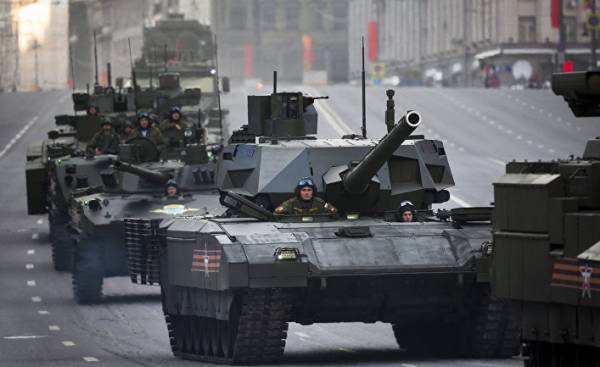 © AP Photo, Alexander ZemlianichenkoТанк T-14 “Armata” during rehearsal of parade in honor of victory in the great Patriotic war in Moscow
© AP Photo, Alexander ZemlianichenkoТанк T-14 “Armata” during rehearsal of parade in honor of victory in the great Patriotic war in Moscow
According to the report of the British intelligence service, British military forces will be very hard to resist the “Armata” in battle. Internal documents written by senior intelligence officers, says that “it is no exaggeration to say that “Armata” is the revolutionary breakthrough in the development of the design of tanks over the past half century”. The report then States that “it is not surprising that this tank became a sensation,” and simultaneously criticized the failure of Britain to create a fighting machine that would be able to compete with the “Armata”.
“Armata” first saw the light in 2015, when its prototype took part in the annual may day parade. According to the report, the revolutionary tank that the crew is protected from fire tower innovative design.
It is also considered that the tank is lighter, faster and has a lower profile than competitors.
The report also reports that the tank will be equipped with a radar system that is used in the new Russian fighters, and protected by armor of modern composite materials.
According to the publication National Interest, however, the “Almaty was” there are a lot of problems. One of them is that the tank is too expensive. Russia just didn’t have enough funds to produce these machines in large quantity. According to the British report, Russia will be able to produce 120 new “Armat” in the year. According to Mike Kofman (Kofman Mike) of the CNA Corporation, a well-known expert on Russian military Affairs, Russia will take 21 years to replace all 2500 tanks are now in service, the “Armat”, but it is only in the case that the Kremlin will the funds that, according to the National Interest, and unlikely.
Next on the list — move the Russian troops which might provoke the Japanese.
New missiles, planes and troops
After the collapse of the Soviet Union in 1991, the military sphere began to save. Ships and submarines are rusting in the ports, and the aircraft did not rise into the air. But with the advent of Vladimir Putin, the army again began to receive funds for new weapons and large-scale exercises.
This year the Russian strategic missile forces will receive 41 new ballistic missile. At the same time, the air force appears 170 new aircraft, the army — 905 tanks and combat vehicles, and the fleet of 17 new vehicles. This was announced by Russian defense Minister Sergei Shoigu.
For 2017 a new ballistic missile will also receive three units of Russian strategic nuclear forces, said Shoigu. Each of the units will use up to 10 missiles.
A growing number of new weapons have led to the need to hire new staff. Shoigu said that the air force is now in need of 1,300 new pilots and are going to complete them in 2017.
Russian military actions in Syria on the side of the regime and the Russian side has used the conflict to test new weapons in emergency conditions.
The project of modernization of the Russian armed forces has resulted in million-strong military force of the country’s potential closer to the West, primarily in regard to standard types of weapons, communications technology and unmanned technology.
Shoigu said that the armed forces now have two thousand drones, and in 2011 there were only 180. He also mentioned that Russia has deployed radar system to monitor its border along the entire length.
The Minister said that the military are going to place three new infantry divisions in the West, southwest and East of the country (Pacific ocean). The Western division will be active in close proximity to Sweden. Even sharper from a geopolitical point of view would be the situation with the placement of Russian troops in the Pacific. Kuril Islands — a disputed subject since the Second world war and Russia and Japan believe that they have a right to these territories.
The deployment of Russian infantry division voltage just will not save. Earlier, the Russians deployed anti-ship missiles, to protect the beach.
Next is the submarine stealth in the Baltic sea.
Lada — submarine stealth in the Baltic sea
The Lada project — the latest attempt by the Russian fleet to create a compact diesel submarine, which will be very difficult to detect.
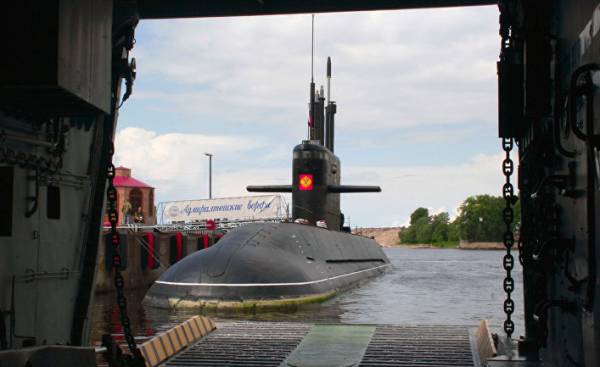 © RIA Novosti, Alexey Danichev | go to photobacteria submarine “Saint Petersburg”
© RIA Novosti, Alexey Danichev | go to photobacteria submarine “Saint Petersburg”
The submarine is quieter than its Soviet predecessor, the boat “Kilo”, it is also quieter than the engines of any of the modern Russian submarines.
To develop the class “Lada” began in the late 1990s. the First submarine of this project “Saint-Petersburg” was launched in 2005. Currently, this submarine is the only finished class submarine “Lada”, but in the coming years Russia plans to build two more.
In contrast to the class “Northwind”, “Lada” is not intended for transportation of ballistic missiles. This non-nuclear combat submarine, is equipped with modern homing torpedoes to destroy other submarines and ships. In addition, submarines of class “Lada” equipped with torpedoes “Waterfall”, created in Soviet times and designed to destroy other submarines.
The details of this boat for the most part are kept secret. According to some information, the sub length is 72 meters, can descend to a depth of 300 meters, and its crew of 37 sailors and officers. The maximum speed of submarines under water is 21 knots.
The project “Lada” also known as a class “Saint Petersburg” and its submarines tailored for operations in the Baltic sea and other relatively shallow waters.
Missile 9K720 “Iskander” may hit in Sweden
Missile 9K720 “Iskander” ballistic short-range missiles, which can carry a nuclear warhead. Missile complex “Iskander” has replaced the old Soviet system of “Scud”.
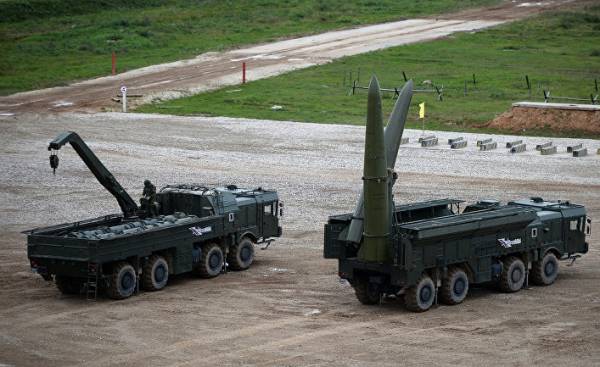 © RIA Novosti, Eugene biyatov | go to fotomontagen complex “Iskander-M”
© RIA Novosti, Eugene biyatov | go to fotomontagen complex “Iskander-M”
In addition to nuclear weapons, “Iskander” can be equipped with many different types of warheads. As an example, can be called precision-guided bombs capable of penetrating the concrete wall of the bunker, cluster bombs, and even electromagnetic missiles to destroy radar systems of the enemy.
Launched missile “Iskander” weighs about 3.8 tons and has a speed of as much as 2 100 meters per second, causing the enemy air defense is very hard to stop her.
Missiles placed near Kaliningrad, the former königsberg in East Prussia, which at the end of the Second world war became part of Russia.
Last week, missile complexes “Iskander” was transported from Luga, near St. Petersburg, in the Baltic. The range of the missiles is from 400 to 500 kilometers, and this means that they can strike at the South-East of Sweden.
In addition, in Baltiysk, which is located at a distance of approximately 40 km to the West of Kaliningrad, is anchored most of the Russian Baltic fleet.
Next is the missile system of the Soviet era, which is still used in the Baltic States.
Tactical missile complex OTR-21 “Tochka”
The missile system is OTR-21 “Tochka” tactical ballistic missile, which was presented to the world in 1976. When the Military Alliance NATO has learned about her existence, she was given the name classification SS-21 Scarab.
 © RIA Novosti, Igor Zarembo | go to fotoankaufe missile complex “Point” to launch tactical missiles at a military training ground “Pavelkova” in the Kaliningrad region
© RIA Novosti, Igor Zarembo | go to fotoankaufe missile complex “Point” to launch tactical missiles at a military training ground “Pavelkova” in the Kaliningrad region
In the 70s the “Point” was considered as a revolutionary breakthrough because it used inertial navigation, than it differed from its predecessor the “Luna-M”.
The most modern version, which NATO calls the Scarab C weighs 1.8 ton, and its range is about 185 kilometers.
The missile can be equipped with traditional warheads and tactical nuclear warheads.
SS-21 is the 53rd missile brigade, stationed in Chernyakhovsk, Kaliningrad oblast, said defense analyst rock climbing enthusiasts Jorgen (Jörgen Elfving), a former Lieutenant Colonel working at the National Institute of defense.
“Every year, according to the plan Russia has two missile brigades are re-get “Iskander-M”. When will rearm the brigade in Chernyakhovsk, is unknown. However, the debate in Russia is often spoken, placing “Iskanderov” in Kaliningrad may become an adequate response to the educational activities of NATO and the placement of NATO troops in Eastern Europe,” says jørgen Elfving.
S-400 can follow 80 enemy aircraft at the same time
S-400 — new star of the Russian air defense. Mobile anti-aircraft system is the most modern version of defense against enemy missiles and aircraft, along with publicized in the Israeli system “Iron dome.”
The C-400 a very advanced tracking system, which can lead to 80 missiles and aircraft simultaneously. The main task of s-400 to disarm the missiles and enemy planes before they reached Russian territory.
Anti-aircraft missile system uses three types of rockets: 40N6 with a range of 400 km 48N6 with a range of 250 km and a 9M96 variant with a range of 120 km.
Released approaching at a speed of just over 1,000 meters per second.
In 2009 Russia’s armed forces have learned about the s-400 near the North Korean border. This was done in order to destroy the nuclear missiles of North Korea, if they are in error closer to the Russian territory.
The production of s-400 began in 2007, and developed the system in the late 1990s. Since then, the service received at least 152 complexes.
These complexes are included in the 183rd anti-aircraft missile regiment, Gvardeysk, Kaliningrad. In the Kaliningrad region of the C-400 was placed in 2012.
Their predecessor s-300VM was exported, for example, in the oil-rich country of Venezuela in South America.
Next on the list is a bomber that Russia holds near Sweden.
Fighter-bomber Sukhoi su-34
Su-34 bomber to the Russian air force was used, including in Syria.
 © RIA Novosti, the Russian defense Ministry | go to fotobanka the first group of aircraft of VC from the base of Hamim in paragraphs permanent deployment on the territory of Russia
© RIA Novosti, the Russian defense Ministry | go to fotobanka the first group of aircraft of VC from the base of Hamim in paragraphs permanent deployment on the territory of Russia
First plane used to destroy targets on the ground.
His crew consists of two people, and has a range of 4 500 km Maximum flight speed at sea level up to 1 400 km per hour. At the height of 11 thousand kilometers, the aircraft can accelerate to 1 900 km per hour. Maximum altitude of 17 thousand and a maximum takeoff weight of 44.4 tons.
Armament consists of missiles “air — air” guided missiles to destroy ground targets, medium-range missiles, guided and unguided bombs.
According to Jorgen, the rock climbing enthusiasts, a number of su-34 is located in the Baltic region.
“There’s a military connection, according to available information, consisting of 24 su-34. It is reported that by the year 2020, from 150 to 220 su-34 entered service with the Russian air force and will replace the su-24. Su-34 were used in Syria,” says jørgen rock climbing enthusiasts.
According to Jane’s Defence Weekly Russia has at least eight aircraft of the su-34 in Syria.
Below we will talk about one of the most modern amphibious ships in Russia.
Amphibious ships
Russia has several large landing ships project 775 “Minsk”, “Kaliningrad”, “Queens” and “Alexander Shabalin”.
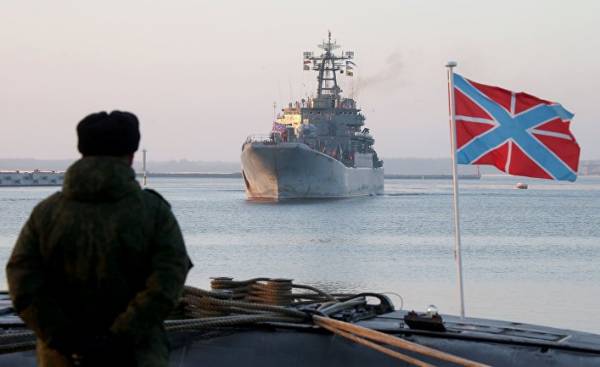 © RIA Novosti, Igor Zarembo | go to fotobabble landing ship (BDK) “Kaliningrad” in the military Harbor of Baltiysk
© RIA Novosti, Igor Zarembo | go to fotobabble landing ship (BDK) “Kaliningrad” in the military Harbor of Baltiysk
The ships are armed with two launchers caliber 57 mm with one setting, 76.2 mm and anti-aircraft missile launchers, two 30 mm caliber.
The ship can carry a battalion of Marines with combat vehicles.
“These ships are quite old, but at the moment is working on a new amphibious ship named “Ivan Gren”, which is currently being tested and will be given to service with the Russian Navy later this year. Originally intended to build six such ships, but now decided to stay only two,” — said Jorgen rock climbing enthusiasts.
The following is a submarine of times of the Soviet Union, which will soon replace the more submarines.
Non-nuclear submarines of class “Kilo”
The crew of the Soviet boat class “Kilo” consists of 57 sailors and officers. The speed of such a submarine is 10 knots above water and 17 knots under water. On average, the submarine can dive to 240 meters. Boat class “Kilo” can stay under water for up to 45 days. The armament consists of six torpedo tubes, and the stock arms can reach 18 torpedoes or 24 min.
Russia has two nuclear submarines of class “Kilo” in the Baltic sea — “Vyborg” and “Dmitrov”. The latter are currently not on the move, according to Jorgen for rock climbing enthusiasts.
Below — a submarine used in the Barents sea.
The class “Northwind” — the new superpotato Russia
“Borey” nuclear submarine, which will replace the famous submarine of project “Akula”, the largest ever created. Northwind significantly less than its predecessor, but it is more difficult to detect, and it is much more maneuverable. Under water the submarine can move at a speed of 30 knots, while over the water, with a speed of 15 knots. Northwind has a nuclear reactor OK-650, the same that were used in Soviet submarines since the early 1980-ies. On Board the vessel 107 sailors and officers, and it can take about 450 meters.
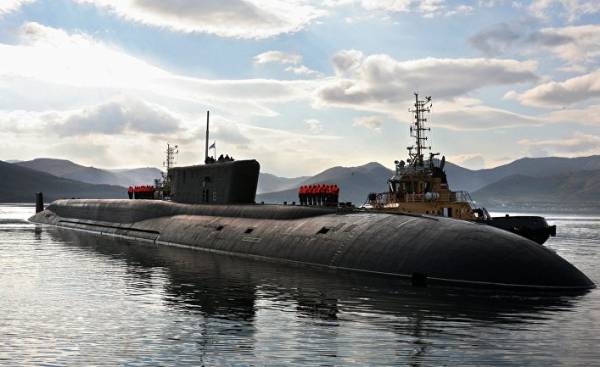 © RIA Novosti, Ildus Gilyazutdinov | go to fotobanka “Vladimir Monomakh” came to the place of permanent deployment in Kamchatka
© RIA Novosti, Ildus Gilyazutdinov | go to fotobanka “Vladimir Monomakh” came to the place of permanent deployment in Kamchatka
Boat with a length of 170 metres equipped with ballistic missiles, which can carry both tactical and strategic nuclear warheads. There are 12-foot missiles RSM-56 “Bulava”. As reported during tests “Maces” was the problem. For example, they exploded in the water, being put into position under water. The theoretical range of the missile is 8,000 km and the accuracy radius is 350 metres away.
In addition, the class “Borey” is equipped with missiles “Storm”, to protect it from enemy submarines and surface ships. They could be charged non-nuclear explosives, or to carry a small tactical nuclear warhead. In addition, the “Boreas” there are many homing torpedoes.
As the submarine uses a nuclear engine, its operation time is unlimited, which theoretically means that “Borey” can be on the job for many years.
The Russian Navy ordered ten submarines of class “Northwind”. Three of them to date, are already in service.
Because of their size “Northwind” primarily adapted for use in the open sea and is not intended for the Baltic region, where it can run aground due to the relatively small depth.
